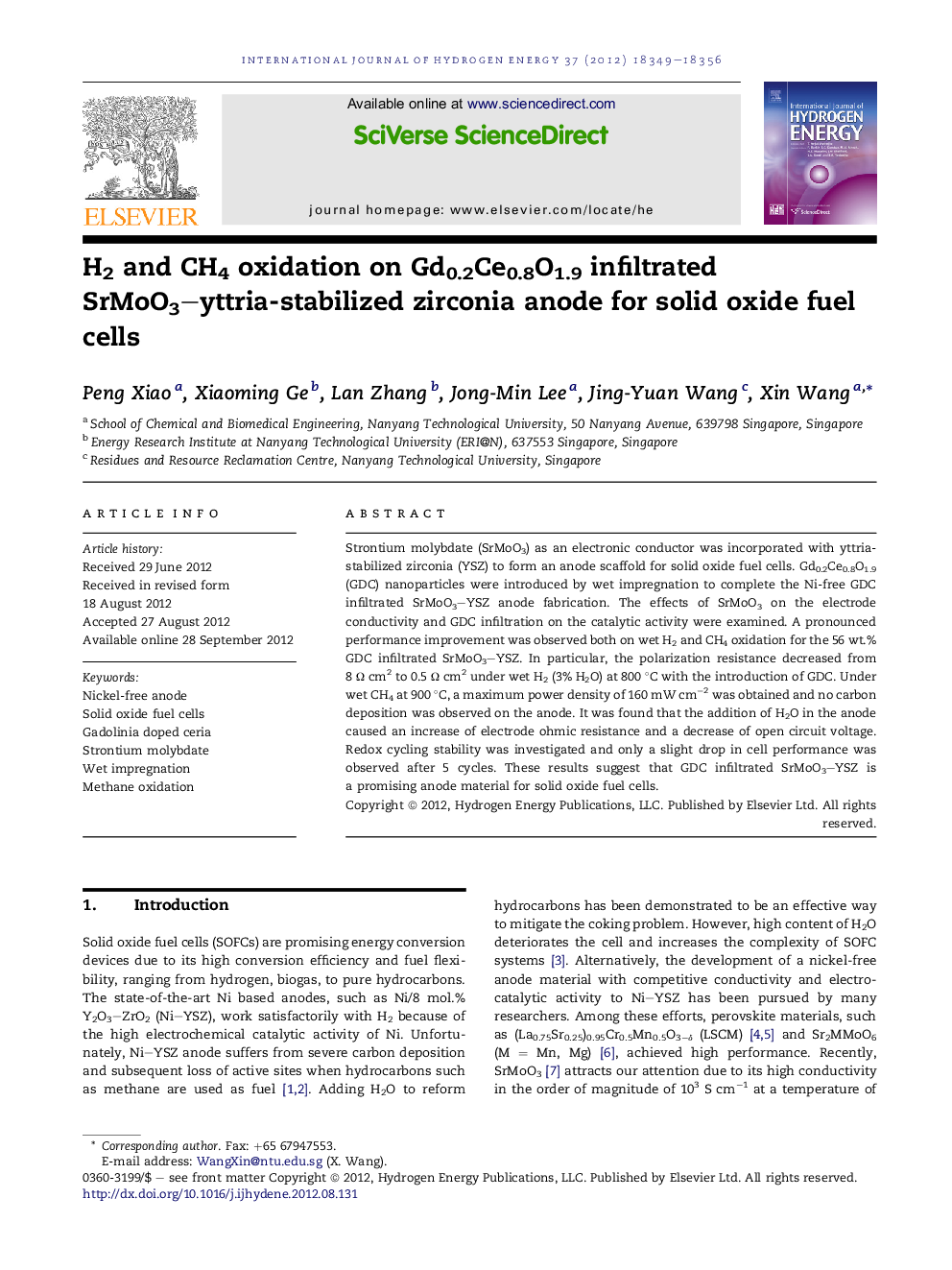| Article ID | Journal | Published Year | Pages | File Type |
|---|---|---|---|---|
| 1278351 | International Journal of Hydrogen Energy | 2012 | 8 Pages |
Strontium molybdate (SrMoO3) as an electronic conductor was incorporated with yttria-stabilized zirconia (YSZ) to form an anode scaffold for solid oxide fuel cells. Gd0.2Ce0.8O1.9 (GDC) nanoparticles were introduced by wet impregnation to complete the Ni-free GDC infiltrated SrMoO3–YSZ anode fabrication. The effects of SrMoO3 on the electrode conductivity and GDC infiltration on the catalytic activity were examined. A pronounced performance improvement was observed both on wet H2 and CH4 oxidation for the 56 wt.% GDC infiltrated SrMoO3–YSZ. In particular, the polarization resistance decreased from 8 Ω cm2 to 0.5 Ω cm2 under wet H2 (3% H2O) at 800 °C with the introduction of GDC. Under wet CH4 at 900 °C, a maximum power density of 160 mW cm−2 was obtained and no carbon deposition was observed on the anode. It was found that the addition of H2O in the anode caused an increase of electrode ohmic resistance and a decrease of open circuit voltage. Redox cycling stability was investigated and only a slight drop in cell performance was observed after 5 cycles. These results suggest that GDC infiltrated SrMoO3–YSZ is a promising anode material for solid oxide fuel cells.
► Strontium molybdate as an electronic conductor is incorporated in anode. ► Performance improvement both on wet H2 and CH4 oxidation is obtained by GDC infiltration. ► Ni-free GDC infiltrated SrMoO3–YSZ anode shows no carbon deposition problem.
